© Mark Hertzberg 2019
Santa Claus brought Paul Hendrickson and Frank Lloyd Wright together in 1953 when he left a maroon J.C. Higgins 3-speed for nine-year-old Paul under the family Christmas tree in Kankakee, Illinois. The bike was not hidden under a blanket, Hendrickson recalls. It was uncovered, “dominating the spray of presents,” there for him to see as he came down the stairs in the morning.
It was chilly that day, with temperatures averaging 30-degrees, the wind gusting to almost 20 mph, hardly conducive to riding far (if at all) on his shiny new bike. When winter gave way to spring three months later, the boy hung his soft brown leather Spalding baseball mitt – he thinks maybe an Eddie Mathews model – on the handlebars of his bike and pedaled away, headed for the ball diamonds in nearby Riverview Park (now known as Cobb Park).
Five blocks south of Hendrickson’s boyhood home, just before he had to swing southeast to get to the park, well, there they were: Wright’s Bradley and Hickox houses. There were other nearby houses with Prairie-style elements (including his family’s rented house), but none as striking as the two Wright-designed homes. The boy often paused on his way to the park to take them in.
 Frank Lloyd Wright’s Bradley House, Kankakee, Illinois
Frank Lloyd Wright’s Bradley House, Kankakee, Illinois

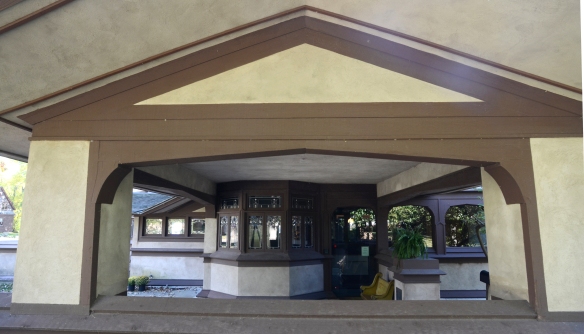

 The Bradley House, left, and the Hickox House
The Bradley House, left, and the Hickox House
 Hickox, framed by the Bradley porte-cochere
Hickox, framed by the Bradley porte-cochere
 The Bradley House was the more striking of the two for Hendrickson
The Bradley House was the more striking of the two for Hendrickson
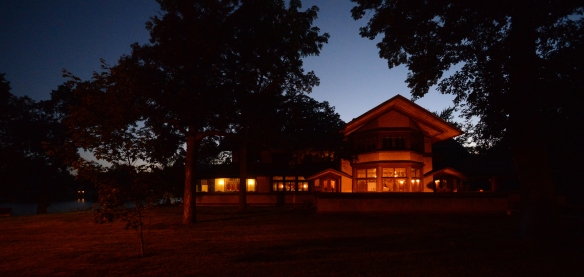
 The Hickox House
The Hickox House

This October, almost 66 years after Santa delivered that new bike, Hendrickson’s latest book, a ground-breaking biography of the architect whose work impressed a little boy in ways he did not yet understand, will be published. Plagued by Fire: The Dreams and Furies of Frank Lloyd Wright tells Wright’s story like no other book has. Its genesis was simple, Hendrickson wrote me in an email, “This book started in my imagination…when I was riding past it [the Bradley House] on my J.C. Higgins 3-speed.”
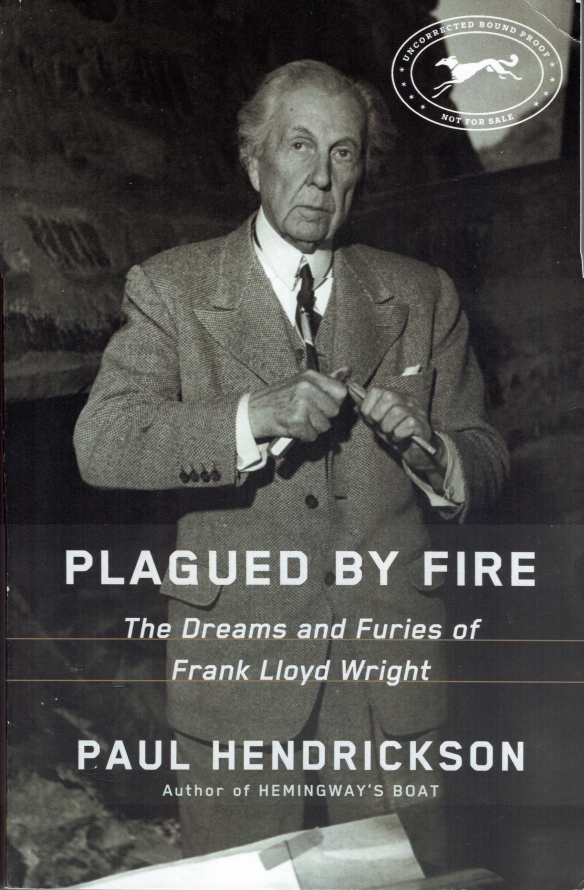
I have just finished reading a bound proof of the book (disclaimer: Hendrickson and I have become friends since he began researching certain aspects of Wright’s life and career). I will write about the book in this essay without telling you anything specific about its revelations and interpretations of Wright’s life because that was the condition of my being able to write about it.
Hendrickson’s goal was to humanize the often-demonized Wright. The book will not be out for another six months but it has rattled the sensibilities of a few Wright devotees, judging from their comments in “The Wright Attitude” Facebook group. They were reacting to the publisher’s advance blurb at:
https://www.penguinrandomhouse.com/books/240133/plagued-by-fire-by-paul-hendrickson/?fbclid=IwAR1hJrTqhlIsM3t28DPcIi59A3OvhKwIlCjMOGJ4reoTnb5yxwLiaKLg0To
Some commenters were upset by “And this, we see, is the Wright of many other neglected aspects of his story: his close, and perhaps romantic, relationship with friend and early mentor Cecil Corwin; the eerie, unmistakable role of fires in his life; the connection between the Tulsa Race Riot of 1921 and the murder of his mistress, her two children, and four others at his beloved Wisconsin home by a black servant gone mad.”
Hendrickson does not stab wildly in the dark to reach his conclusions. His conclusions – and sometimes he writes that we will never know the answer to one particularly intriguing question or another – are not unsubstantiated. He meticulously outlines the facts he has uncovered (perhaps inconvenient facts for some people). His research is unimpeachable. I have already told you that I won’t spill the beans. You will have to wait until you are near the end of the book for some of the pieces of Hendrickson’s take on Wright’s life to fall in place for you, but they will. I smiled and nodded when I reached those points of understanding.
The colloquialism “gumshoe” refers to detectives, sometimes private eyes. Hendrickson does not wear a tan trench coat and fedora in the style of 1950s film noire detectives, but I thought of him as a gumshoe when I read how he left no stone unturned in his research. He outlines for his readers how he came to understand facts about Wright in his narrative, rather than forcing the reader constantly turn to cumbersome endnotes. Still, his 45-page “Essay on Sources” at the end of the book is as important as the narrative itself. Hendrickson drove untold hundreds (or even thousands) of miles, walked every inch of ground in places that were important to write Wright’s story, dug through voluminous archive files, often finding rare documents that no previous Wright scholar had seen. What was the weather like when Wright left Madison to announce himself to Chicago? Just ask Hendrickson. You get the idea.
Hendrickson was not content to parrot oft-repeated anecdotes about Wright’s life if he was unable to verify them for himself. His research took him on multiple trips to Wisconsin, Illinois, Arizona, and New York. That was to be expected. It also took him to some unexpected places in those states, as well as to unexpected states that shall remain nameless in this essay.
Working in his third floor office at home, a baseball-style cap perched on his head, Hendrickson, a former writer for the Washington Post, has taken a clean sheet of drafting paper in his computer and redefined Wright as more layered and more human than many people have previously thought. Of course Hendrickson had to start from what Wright had written about himself and what others have written about him (Hendrickson’s bibliography is four pages of single-space type) just as Wright often drew from his work-to-date when he began a new commission.

Photo (c) Cecilia Hendrickson
Take any story you have heard about Frank Lloyd Wright and cast it aside if it does not stand up to Hendrickson’s painstaking primary research. His word images (poetry-in-complete sentences) tumbled from the keyboard for his silver desktop Mac the way designs are said to have tumbled out of Wright’s sleeve.
Hendrickson built his narrative from both the 1933 and 1942 editions of Wright’s An Autobiography (among dozens of other books and interviews). It is well known that Wright did not get it right in many parts of his self-telling about himself. Hendrickson explains those failings, including writing about “the Wright who was haunted by his father, about whom he told the greatest lie of his life.” (from Hendrickson’s publisher’s advance publicity). What was that “greatest lie?” You will have to read the book to find out.
After Hendrickson returned from research trips he hunkered down in his third floor loft writing atelier, between the English classes he teaches at the University of Pennsylvania. He keeps folder files in a bookcase and in piles on the floor. “I try to keep things fairly clean and ordered,” he wrote me when I asked him to describe how he writes. He kept various biographies, including the two editions of An Autobiography on his large green-glass writing desk with a spiral-ringed index nearby. Two Wright placemats which he considers “talismans” are on the desk, as well.
His screen saver is a picture of Fallingwater. There is Wright artwork on the walls, “including a photograph of the B. Harley Bradley in Kankakee.” Why that house? Because that is where Hendrickson’s Wright adventures started forming in his imagination 66 years ago as he rode past it on his way to the park and yet another game of catch.
Note added April 11: A commenter on Facebook squirms at the mention of Wright’s affection to Cecil Corwin (and I am not divulging what conclusion, if any, Hendrickson reaches about that). I have asked him why a man’s affection for another man, or a woman’s affection for another woman, no matter what form that affection takes, should make us uncomfortable. Does that person squirm about Wright’s physical affection for Mamah Borthwick or for Olgivanna before their marriage? I think not.
Many people have pre-ordered Hendrickson’s book on-line from the Seattle behemoth that is Amazon. I urge you to instead order the book from your closest local bookshop. We have to do all we can to keep our local booksellers in business. If you don’t have a bookshop near you, you can pre-order from the publisher. That will do more to help authors than ordering from the Big A.

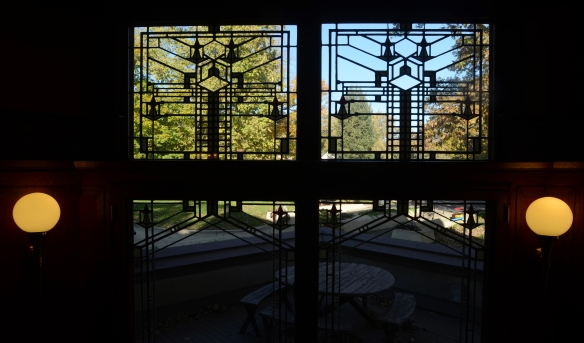




 Hendrickson, left, with Gaines and Sharon Hall who bought and restored the Bradley House, and then made it possible for Wright in Kankakee to acquire it.
Hendrickson, left, with Gaines and Sharon Hall who bought and restored the Bradley House, and then made it possible for Wright in Kankakee to acquire it.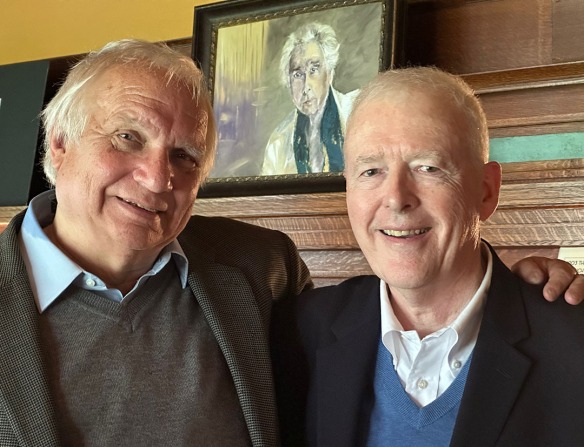 Hendrickson dedicated Plagued to Tim Samuelson, City of Chicago Cultural Historian Emeritus.
Hendrickson dedicated Plagued to Tim Samuelson, City of Chicago Cultural Historian Emeritus.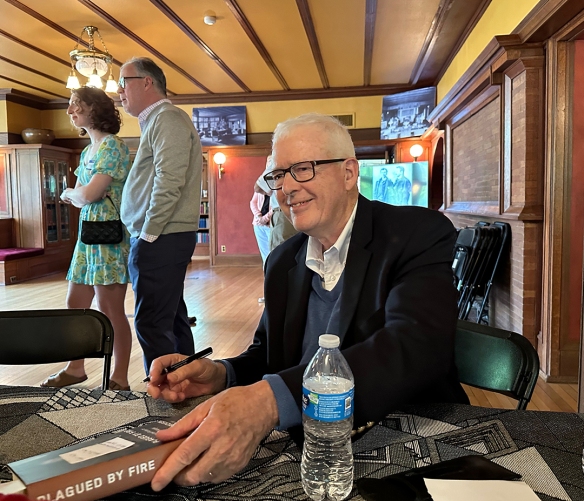



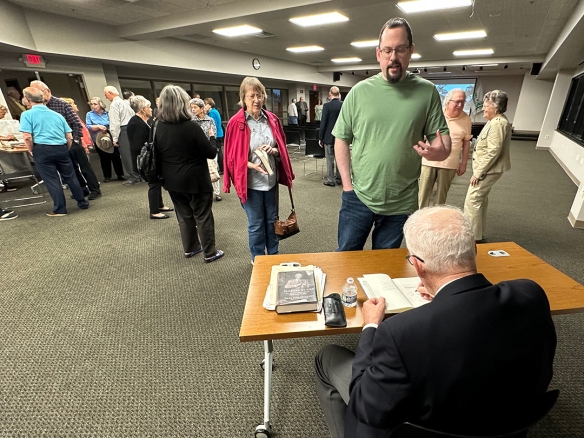


 Frank Lloyd Wright’s Bradley House, Kankakee, Illinois
Frank Lloyd Wright’s Bradley House, Kankakee, Illinois


 The Bradley House, left, and the Hickox House
The Bradley House, left, and the Hickox House Hickox, framed by the Bradley porte-cochere
Hickox, framed by the Bradley porte-cochere The Bradley House was the more striking of the two for Hendrickson
The Bradley House was the more striking of the two for Hendrickson
 The Hickox House
The Hickox House




